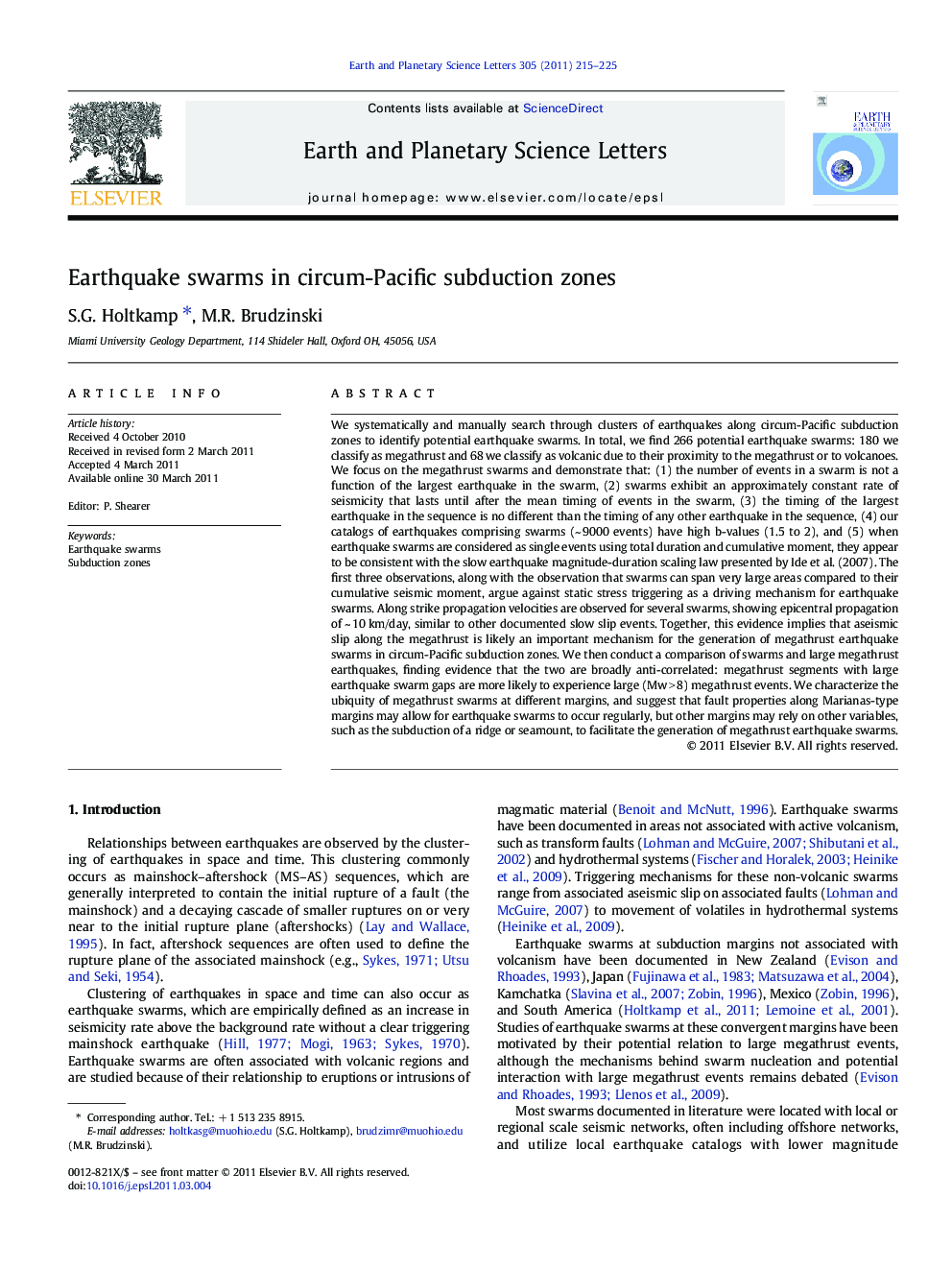| Article ID | Journal | Published Year | Pages | File Type |
|---|---|---|---|---|
| 4677967 | Earth and Planetary Science Letters | 2011 | 11 Pages |
We systematically and manually search through clusters of earthquakes along circum-Pacific subduction zones to identify potential earthquake swarms. In total, we find 266 potential earthquake swarms: 180 we classify as megathrust and 68 we classify as volcanic due to their proximity to the megathrust or to volcanoes. We focus on the megathrust swarms and demonstrate that: (1) the number of events in a swarm is not a function of the largest earthquake in the swarm, (2) swarms exhibit an approximately constant rate of seismicity that lasts until after the mean timing of events in the swarm, (3) the timing of the largest earthquake in the sequence is no different than the timing of any other earthquake in the sequence, (4) our catalogs of earthquakes comprising swarms (~ 9000 events) have high b-values (1.5 to 2), and (5) when earthquake swarms are considered as single events using total duration and cumulative moment, they appear to be consistent with the slow earthquake magnitude-duration scaling law presented by Ide et al. (2007). The first three observations, along with the observation that swarms can span very large areas compared to their cumulative seismic moment, argue against static stress triggering as a driving mechanism for earthquake swarms. Along strike propagation velocities are observed for several swarms, showing epicentral propagation of ~ 10 km/day, similar to other documented slow slip events. Together, this evidence implies that aseismic slip along the megathrust is likely an important mechanism for the generation of megathrust earthquake swarms in circum-Pacific subduction zones. We then conduct a comparison of swarms and large megathrust earthquakes, finding evidence that the two are broadly anti-correlated: megathrust segments with large earthquake swarm gaps are more likely to experience large (Mw > 8) megathrust events. We characterize the ubiquity of megathrust swarms at different margins, and suggest that fault properties along Marianas-type margins may allow for earthquake swarms to occur regularly, but other margins may rely on other variables, such as the subduction of a ridge or seamount, to facilitate the generation of megathrust earthquake swarms.
Research highlights► We identify 266 potential earthquake swarms along circum-Pacific convergent margins. ► We analyze swarm seismicity and suggest aseismic slip as an underlying mechanism. ► We show that swarms and large megathrust earthquakes are anti-correlated.
